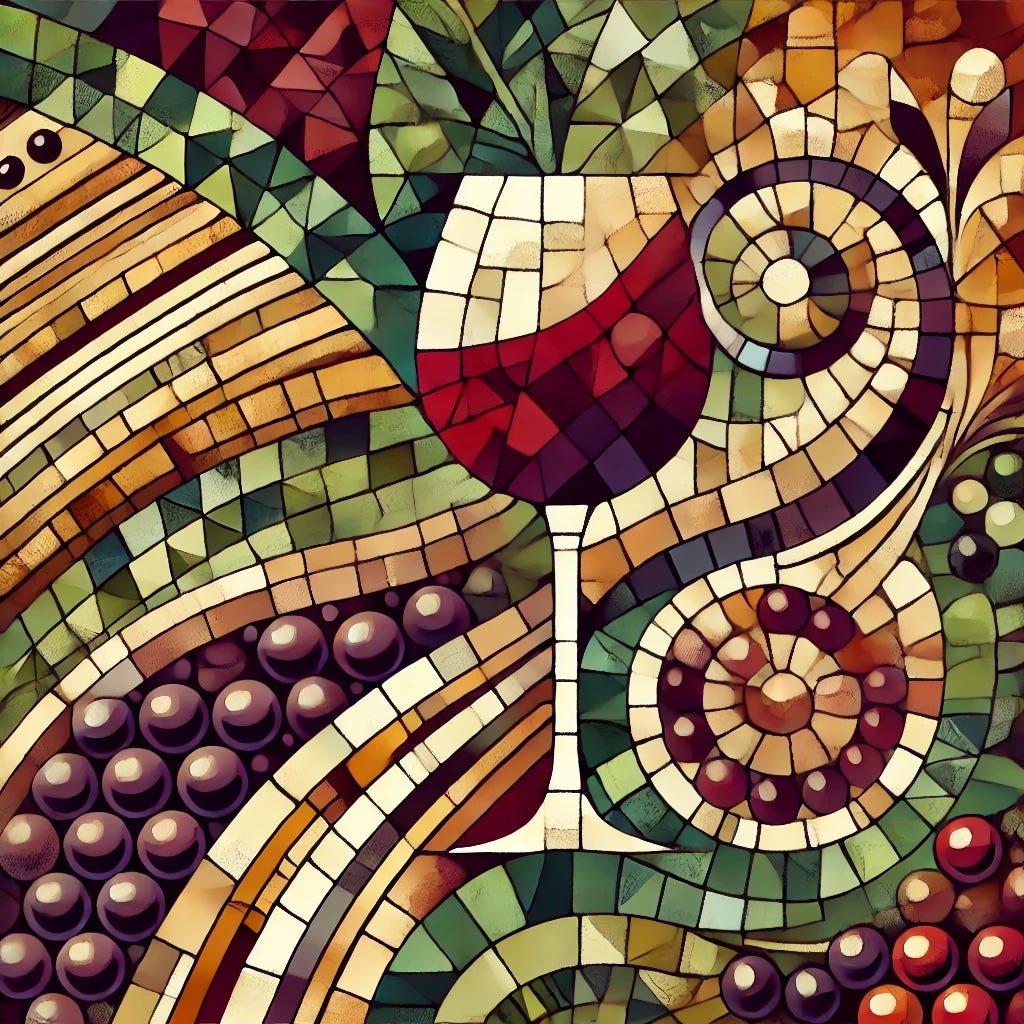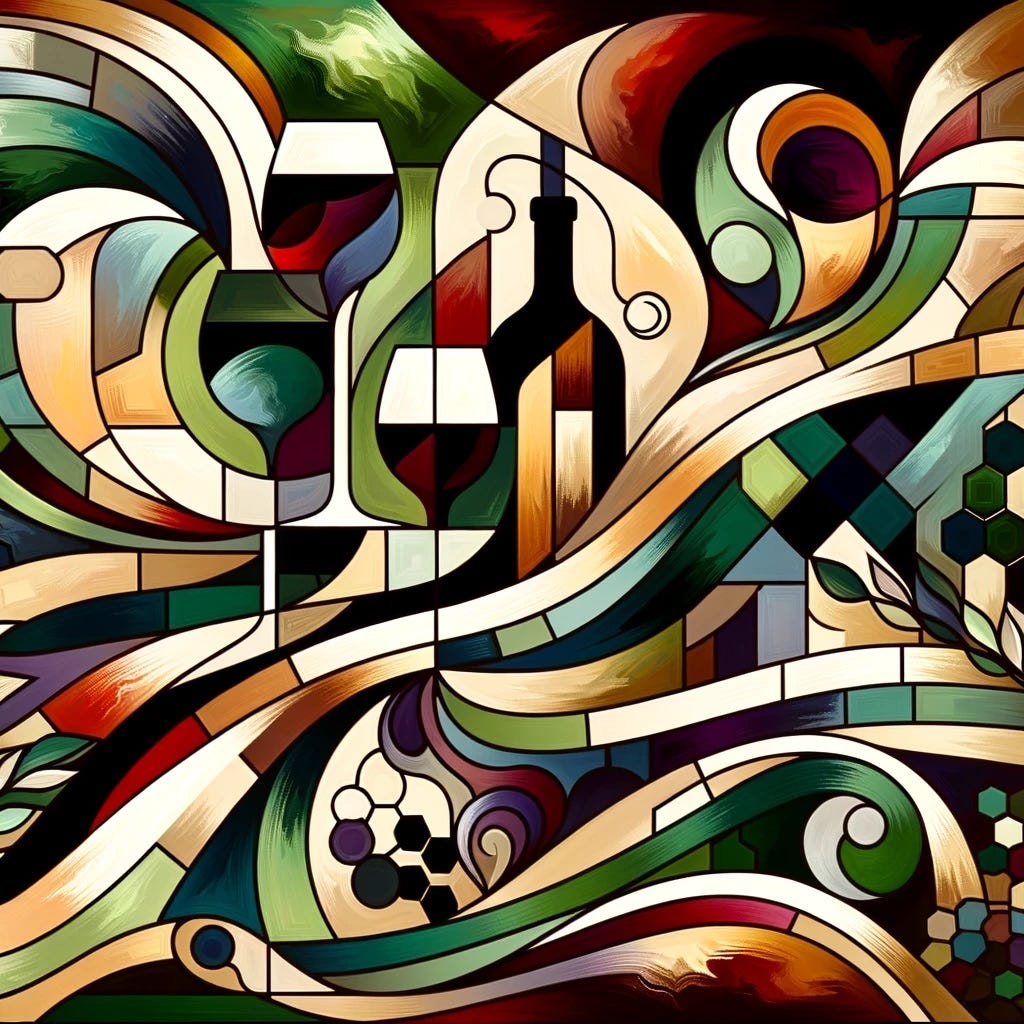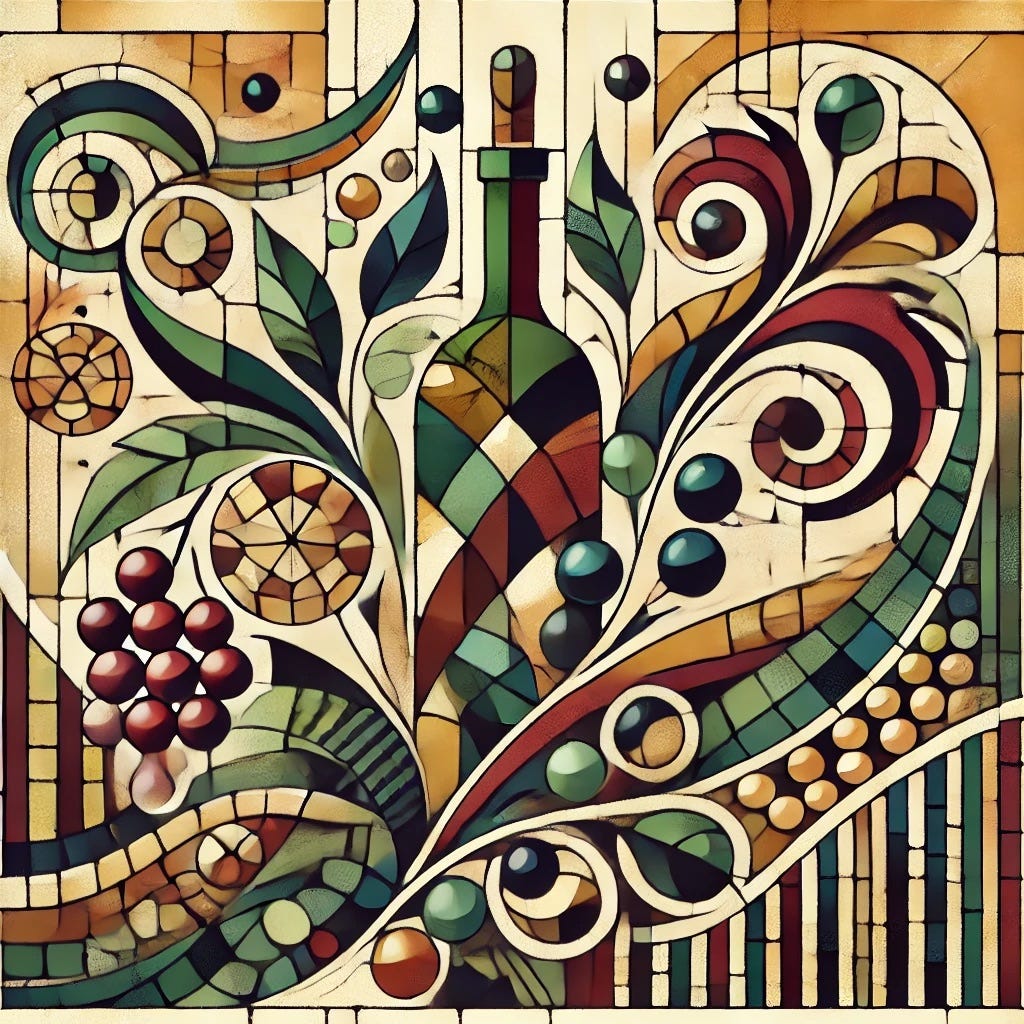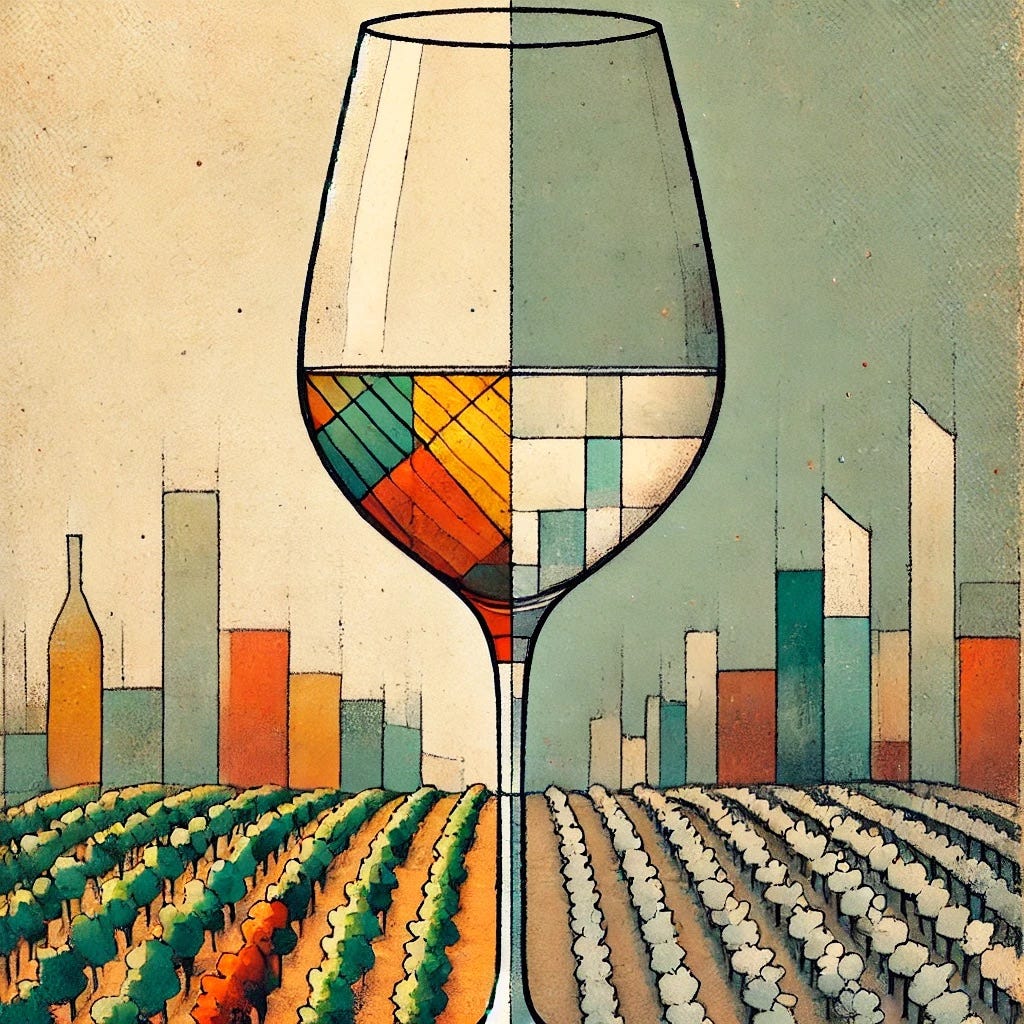NAPA VALLEY, Calif. — Leon Adams, founder of California’s Wine Institute and a sage supporter of all American wines, believed that most Americans should have a dry wine on the dinner table every evening. He promoted the idea in several pamphlets that he wrote for the institute that attempted to demystify the product. They were mailed free to anyone requesting them.
Adams is credited with saying, “Since wine is a food, it ought to be as cheap as milk.”
He once told me he thought expensive wine had its place, but in terms of this country it played a minor role. Wine, he once told me, should be as affordable here as it is throughout Europe. In dozens of cafés in France signs offer fixed-price luncheons with the words “vin compris” – wine included. There it’s a daily quaff.
Most French wine is made and sold locally and not particularly exalted. Café wines rarely are bottled, and proprietors rarely know much about them other than that they are local and intended to go with food. And both wine and food are unexceptional.
If Adams were alive today, I’d wager he’d be appalled at the state of modest American wine – and in particular how much it costs. The United States has never been a wine-consuming nation. We are nowhere near as interested in wine as are most Europeans. But for those of us who want a decent glass of wine, even in unexceptional cafés, prices for simple wines are ludicrous. And quality is ridiculously ordinary. Or poor.
One of the problems we face is that in today’s America, wine is widely considered to be both a health hazard and such a luxury that in many locations the prices for simple vin ordinaire are far too high. And one result is that most Americans simply don’t consume much of it.
Statistics from the International Organization of Vine & Wine show that nine of the top wine-consuming nations per capita are in Europe. The list:
Portugal: 61.7 liters per capita
France: 45.8 liters
Italy: 42.1 liters
Switzerland: 31.8 liters
Austria: 30.1 liters
Germany: 26.6 liters
Australia: 25.5 liters
Czech Republic: 24.4 liters
Spain: 24 liters
Netherlands: 23.1 liters
There is a reason that Portugal leads the world: Its wines tend to be so inexpensive that it’s a staple on almost every table.
My wife and I visited Portugal in 2009. On a trip to Sintra, we had lunch at a lovely inn. A card attached to the wine list showed that a local wine was 5 euros. We ordered a glass. What arrived was an entire bottle – for 5 euros.
The United States ranks 15th in worldwide per capita wine consumption at 12 liters a year — which is roughly just a little more than one bottle per month on average.
The small amount of wine we consume here is partly a result of the fact that it’s generally too expensive for most people. I am not talking about Napa Valley’s most prestigious product, its exalted cabernets. I’m referring to simple white or red table wines for which we are now expected to pay $8 to $12 per bottle for at the grocery store – and $8 to $12 per glass in a café.
Challenge your vocabulary with this week’s mystery word. Submit your answer in the poll, and check the bottom of the page for the correct answer.
Even if a moderately priced wine has a varietal designation, such as cabernet sauvignon, such a price is absurd, especially in comparison to most other countries where a simple table wine costs roughly 20% of what we pay. At a time when U.S. citizens are decrying the cost of milk, butter and eggs, restaurants that charge $10 for a few ounces of simple, poor-quality generic wines are discouraging diners.
And American consumers are not unaware of how bad this wine is, which is one reason for the current downturn in sales of wines.
More modestly priced wines usually are produced by large wine companies where economies of scale have reduced costs. That has allowed wines to be marketed at fair prices. But for the most part, retail stores and restaurants are stuck in a system that encourages them to charge more for mediocre plonk that’s not worth what they’re selling it for.
Restaurants and retail stores both operate under an antiquated system in which formulas determine prices that they charge. Since 1978, retail wine discounting has been legal throughout the state, and for the last four decades I have been amazed that so many retailers continue to mark up almost all wines by the old formulas.
The real problem here is that for various reasons over the last 25 years, wine prices have increased. U.S. wines that once sold for $12 or $13 or so moved up to nearly $20. I have tasted many of these wines. They are generally pretty bad. By “bad” I do not mean flawed or spoiled; they are sound – technically. What I take issue with is the fact that many of them are so inauthentic that they do not justify their prices.
Varietal wines mostly have nothing to do with the grape named on the front label. One reason for this is that alcohol levels have risen far beyond the point where the wines are balanced enough to work with food. For some bizarre reason, anyone who makes a cabernet or any number of other red wines believes that 15% alcohol is somehow better than anything lower. But lower-alcohol wines almost always taste better with food.
Also, acid levels have been reduced in the last 30 years, so most of our wines tend to be sort of soft or sweet. This idea is intended to “dumb down” all wines so they are succulent, rich or tasty. The majority of Europe’s table wines, which are targeted toward daily consumption, have historically been elegant, crisp and dry.
The soft/sweet formula for simple wines panders to people who know nothing about wine. Such wines are made for the masses. They are not made to go with food. Wineries must think everyone consumes them like cocktails.
In Adams’ day, wine education was considered to be one of the Wine Institute’s major roles. The pamphlets that he wrote were about consuming wine in moderation with food, how to properly pair wines and foods, the appropriate temperatures at which to serve wine, the correct glassware to use and numerous other topics that he hoped would bridge the gap from abstention (Prohibition) to fine dining.
The Wine Institute abandoned wine education decades ago. All of Adams’ pamphlets were summarily discarded, an idea that I unsuccessfully opposed. The Wine Institute today is more of a lobbying organization than it is about wine education.
Another business that was dedicated to wine education years ago was the major wholesale trade. Many of their top wine salesmen were skilled in various areas of wine education. One longtime sales associate, who had been born in Italy and was involved in marketing Italian wine for a large wholesaler, spent his time not only selling wine but also educating retailers and restaurant personnel about obscure Italian districts and Italian varietal grapes.
Decades ago, however, he retired early when his wholesaler company decided to save money and fire salespeople. Many wholesalers reduced their staffs by getting rid of the wine experts. Since spirits made more money, the salespeople who were retained were those who sold whiskey and other hard liquors.
An old friend, now in retirement in Sonoma County, worked for decades as a wholesale wine representative. “They didn’t need me to do wine education anymore,” he told me. “I had become just an order-taker.”
The poor quality of inexpensive table wines in restaurants and their high pricing has led to an unusual situation. In one of the greatest dining cities in the world, San Francisco, wine sales are collapsing. An article in the San Francisco Chronicle on Dec. 27 was headlined “Red wine sales are tanking at S.F. restaurants.” It contained a chart showing that red wine sales declined almost 12% in the second quarter of 2024 compared with the same period in 2023.
Last April the Chronicle conducted a reader survey in which some diners said that wine by-the-glass prices were “outrageous” and “shocking.” The article quoted one diner saying that he was “getting pretty sick of [paying] $18-$20 or more” – for a 4-ounce glass of wine.
Of course, most of this wine probably was branded and made by producers that have high fixed costs. But diners usually are given few choices other than expensive branded products. I’m more interested in simple dry table wines that work with food. And the best bets I have found in the last 30 years tend to come from Europe. These are wines that U.S. restaurants typically do not carry. One reason is that they do not provide enough revenue.
Just look at the imports available today at retail stores like Trader Joe’s or Grocery Outlet. Many of those wines are from producers I’m not familiar with. I often buy these wines because many are remarkably good and so reasonably priced that they make California wines seem ridiculously overpriced.
I paid $6.99 for a bottle of a French sauvignon blanc at Trader Joe’s recently. It was delightful – dry, authentic to its region and rather sophisticated. This same wine has been at Trader Joe’s for decades. (Long ago I paid. $4.99 for it; in 20+ years it has gone up $2.)
And keep in mind that Trader Joe’s makes a decent profit on all of the wines it sells, which means that it probably paid no more than about 5 dollars for a bottle of it (probably less).
I’m certain that wines of this caliber probably have been offered to retailers and restaurants for decades. But for various reasons (profit?), most restaurants stick with pricier California wines and then charge much higher prices for a glass than a standard markup justifies.
Such higher pricing is not ignored by consumers. When they’re paying more than they think they should and when the wine quality is so poor, they eventually lose interest in dining out. (See the Chronicle article above.)
One more thing that has become an incredibly dumb trend: restaurants increasing corkage charges. Twenty years ago, corkage charges of $10 or $15 per bottle were routine, with a few at about $20. (Michelin-starred places could charge whatever they chose, and a few restaurants prohibited the practice.) When a restaurant is always filled, even on midweek nights, I certainly understand increased corkage charges or prohibiting the practice.
However, as post-COVID-19 dining out attempted to return to normalcy, some restaurateurs began to raise corkage charges to $30 or $35 and more.
I have friends with large wine cellars, of which they are rightly proud. They’d like to dine out with a 30-year-old Napa cabernet or 15-year-old Russian River Valley pinot noir. Despite the fact that these people are relatively well off and do not mind spending money on fine food, many have told me they hate being ripped off – and $35 corkage charges to drink wines that they aged for decades is an affront to them.
Some restaurants will waive one corkage charge for each bottle purchased off the wine list, which makes sense for parties of four or more people. But when a couple is dining out, how does that make any sense? All it does is to encourage the couple to consume more than they should. (One bottle per person?)
One suggestion I have made to several restaurant owners over the years is to have a lower corkage charge for midweek nights, when dining out is less likely and when patronage is slim. A lower midweek corkage charge might encourage wine-lovers to bring in old bottles. Thus far no restaurant that I’ve made the suggestion to has adopted it.
Wine Discovery
2022 RouteStock Cabernet Sauvignon ($25) – I have been saying for decades that many wines in this world cannot be evaluated quickly. Most need time to develop. For example, tasting wine direct from the barrel might be fun, but it is utterly meaningless when it comes to trying to gauge the quality or potential of a wine. In much the same way, pulling the cork on a bottle of wine, pouring it into a glass and then trying to make an instant evaluation of its quality is almost a guarantee of failure. For one thing, most red wines these days are released far too soon. For another, because wines are a living product, many of them should be treated carefully before an evaluation can be accurately done.
This wine is a classic case in point. After buying a bottle at a retail store, I took it home and immediately pulled the cork. Finding a Napa cabernet for this low a price made no sense – not when supposedly better wines are selling for 10 times this price. And my worst fears were validated: The initial aroma was bizarre. It was distinctly cabernet, but the odd aromatics combined with a bit of reduction (I won’t get technical here) made it a little inexplicable. So I decanted it and waited for a couple of hours. Aeration helped measurably. The aroma turned more toward dried herbs and green tea – a perfect example of cabernet’s varietal character along with dark berry fruit, which I had not been able to access earlier. Hours later I put the wine back into its original bottle and replaced the cork.
The next day I had lunch with three wine professionals, all of whom have been judges at international wine competitions. I poured the wine for them without telling them what it was. All of them easily identified it as a cabernet, and one said it smelled like a wine made in the style of the 1980s. As we all swirled our glasses, the wine continued to open up and displayed fascinating complex characteristics. One of the judges tasting the wine said he believed that some of it might have come from a cooler area of Napa. I later learned that some of the fruit was from Coombsville, a cool area east of Napa.
With only a few ounces left in the bottle, I took the remainder home. That evening, 26 hours after I had originally pulled the cork, the wine had actually expanded and was showing beautifully. This wine was made by Wilson-Daniels, the Napa Valley-based international wine company that has a very successful portfolio that includes wines from numerous other countries. This wine may be one of the least-heralded in its portfolio, but it’s definitely worth seeking out. Just be patient after pulling the cork!
This Week's Word Challenge Reveal:
The correct answer is D: Excessive greed for wealth. “Cupidity” derives from the Latin word “cupiditas,” meaning “desire.”' It is often associated with an insatiable appetite for material wealth. We hope you enjoyed this week’s challenge. Stay tuned for next week’s word.
If today’s story captured your interest, explore these related articles:
Dan Berger’s Wine Chronicles: The Depth and Versatility of Sangiovese
Dan Berger’s Wine Chronicles: Uncovering the 'Soul' of Noble Reds
Explore all Napa Valley Features stories on our main page.
Dan Berger has been writing about wine since 1975.
The views, opinions and data presented in this article are those of the author and do not necessarily reflect the official policy, position or perspective of Napa Valley Features or its editorial team. Any content provided by our authors is their own and is not intended to malign any group, organization, company or individual.











Another good read, thanks Dan. Our thoughts on California wine run parallel. I’m basically a Francophile because of the reasons you often cite. For me wine belongs on my table with my meal. I never drink wine as a cocktail. Many of my friends feel otherwise though and I’m often the odd man out when I don’t like the bold, overly oaked, high octane, sweet reds they prefer and pay too much for.
not about Berger's article but mystery word. The definition was D, not A